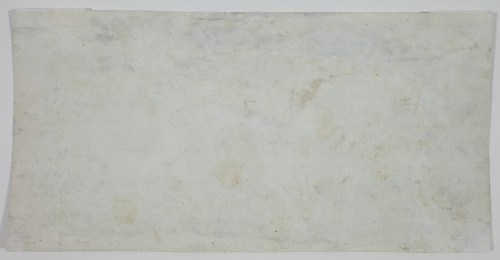René BOYVIN (or workshop of): Contest between Minerva and Neptune, after Rosso Fiorentino
SOLD
Engraving, 121 x 241 mm to the borderline. Robert-Dumesnil 67, Levron 182, Le Blanc 17, IFF p. 177.
Fine impression printed on laid paper, trimmed to the borderline or just outside. Repaired paper loss in the upper (8 x 4 mm) and bottom (13 x 5 mm) corner and two very tiny repaired areas with retouching in ink on the right edge of the sheet. Tiny areas of paper thinning on the back of the sheet and six tiny pin holes in the upper part of the subject.
Very rare.
The gods on Mount Olympus organised a contest between Minerva and Neptune in order to decide who will be the patron of the capital of Attica, and will give it his or her name: whoever suggests the most useful invention, wins. Neptune strikes the ground with his trident, conjuring a horse and a fountain. Minerva grows an olive tree on Greece’s arid soil and thus wins the contest. The city will bear her name: Athena in Greek. Athens and its people are personified in the middle of the print, in the shape of a young woman bearing fortifications on her head, with children huddled around her.
Even though this engraving is not signed, Robert-Dumesnil confidently attributes it to Boyvin: “A very-beautiful piece, no doubt engraved by our artist when he worked so finely, looking to emulate the manner of Étienne Delaune”; but neither his name nor his monogram are to be found on it.” According to Jacques Levron, it belongs with the “estampes de l’atelier” (“prints from the workshop”), a category in which Levron groups prints that Boyvin engraved but did not sign, and prints that are more probably by a student or another printmaker.
The model for this engraving is probably a composition by Rosso Fiorentino, that has not survived. The western wall in the François 1er gallery in Fontainebleau was painted over in the 19th century, based on prints by René Boyvin and Antonio Fantuzzi, with a very similar composition (Jenkins AF 32). The exact position of Rosso Fiorentino’s painting is a matter of debate. Henri Zerner writes: “there is no positive reason to think that it might have been in that spot originally: Mariette claims it wasn’t even in the gallery. Moreover, if the layout of the western wall was similar to that of the eastern wall (known through a sketch by F. d’Orbay), which is highly likely, then the painting couldn’t have been where it was restored.” (L’École de Fontainebleau, p. 265, our translation). Boris Losski disputes this: “As for [Auguste] Couder, the committee [that was charged in 1849 to examine restoration works carried out since 1845] blames him for going, in his efforts at reconstitution, “beyond what seemed strictly necessary”, in particular when it comes to images of the Fire and the Contest of Minerva and Neptune. This last one was painted, with the help of Boyvin’s and Fantuzzi’s prints, over the remains of a fresco that Couder found underneath Poërson’s allegorical painting, which had been covering them since the end of the 17th century. The fact that these traces exist stands in contradiction with the currently widely held opinion according to which the fresco of the Contest could not possibly have been in that spot.” (Colloque L’Art de Fontainebleau, p. 29, our translation). The exact spot where the composition might have been, and the technique used by Rosso, painting or bas-relief in stucco, remain therefore uncertain.
Engravings by René Boyvin and Antonio Fantuzzi have markedly different styles. Fantuzzi’s etching, made around 1540-1545, has a free and energetic style, but makes the scene less legible in places, whereas René Boyvin’s engraving aims to be more rigorous and rational. The chosen format is smaller but more elongated; two architectural elements frame the scene on the right and on the left and bring balance to the composition. Boyvin also elects to leave the background of the top part blank, in order to create two distinct spaces: mortals on earth, and immortal gods in the sky.
References: Alexandre-Pierre-François Robert-Dumesnil: Le peintre-graveur français, vol. 8, 1850; Jacques Levron: René Boyvin, graveur angevin du XVIe siècle : avec le catalogue de son œuvre et la reproduction de 114 estampes, 1941; L’École de Fontainebleau, exhibition catalogue, 1972; Chastel, André (ed.): Actes du Colloque international sur l’art de Fontainebleau, 1972, 1975.




